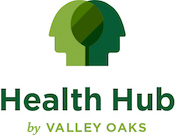One in ten Americans will suffer from an eating disorder at some point in their lifetime. These serious mental and physical illnesses strike people of every age, race, gender, and body shape. They can be rooted in internal trauma, external pressures, and a variety of other uncontrollable factors. For the 30 million people who struggle in this country with some form of disordered eating and for those who love them, knowing the risk factors, symptoms, and treatment options is the first step in preventing serious harm.
Risk factors
Research shows that eating disorders aren’t a one-cause problem. The complex combination of genetic, biological, behavioral, psychological, and social factors can create negative associations with food and body image. Problems with disordered eating usually appear during a person’s teenage years or young adulthood, and though all people are at risk, women are twice as likely to struggle with eating disorders.
Common symptoms
The key to successful recovery is early detection. While signs and symptoms may differ between individuals and eating disorders, in general, a person with disordered eating patterns will display a hyperfocus on weight, food, calories, and dieting.
Some other behavioral symptoms can include:
- Refusal to eat certain foods or restrictions against whole dietary categories (e.g., no carbohydrates, etc.)
- Appears uncomfortable eating around others
- Skipping meals or taking small portions of food at regular meals
Emotional symptoms may include:
- Extreme concern with body size and shape
- Withdrawal from social life and hobbies
- Frequent and extreme mood swings
Physical side effects usually include:
- Noticeable fluctuations in weight, both up and down
- Muscle weakness
- Cuts and calluses across the tops of finger joints (a result of inducing vomiting)
Finding treatment
If you relate to any behaviors or physical symptoms listed above, judgment-free help is available. The first step is always the hardest, but at Valley Oaks Health, we will be with you until recovery is reality.
If you recognize these signs and symptoms in a loved one, you may feel helpless. Approaching them with love and compassion may be challenging, but healing is available for both of you.
If you’re ready to have that conversation about an eating disorder, contact Valley Oaks today.







